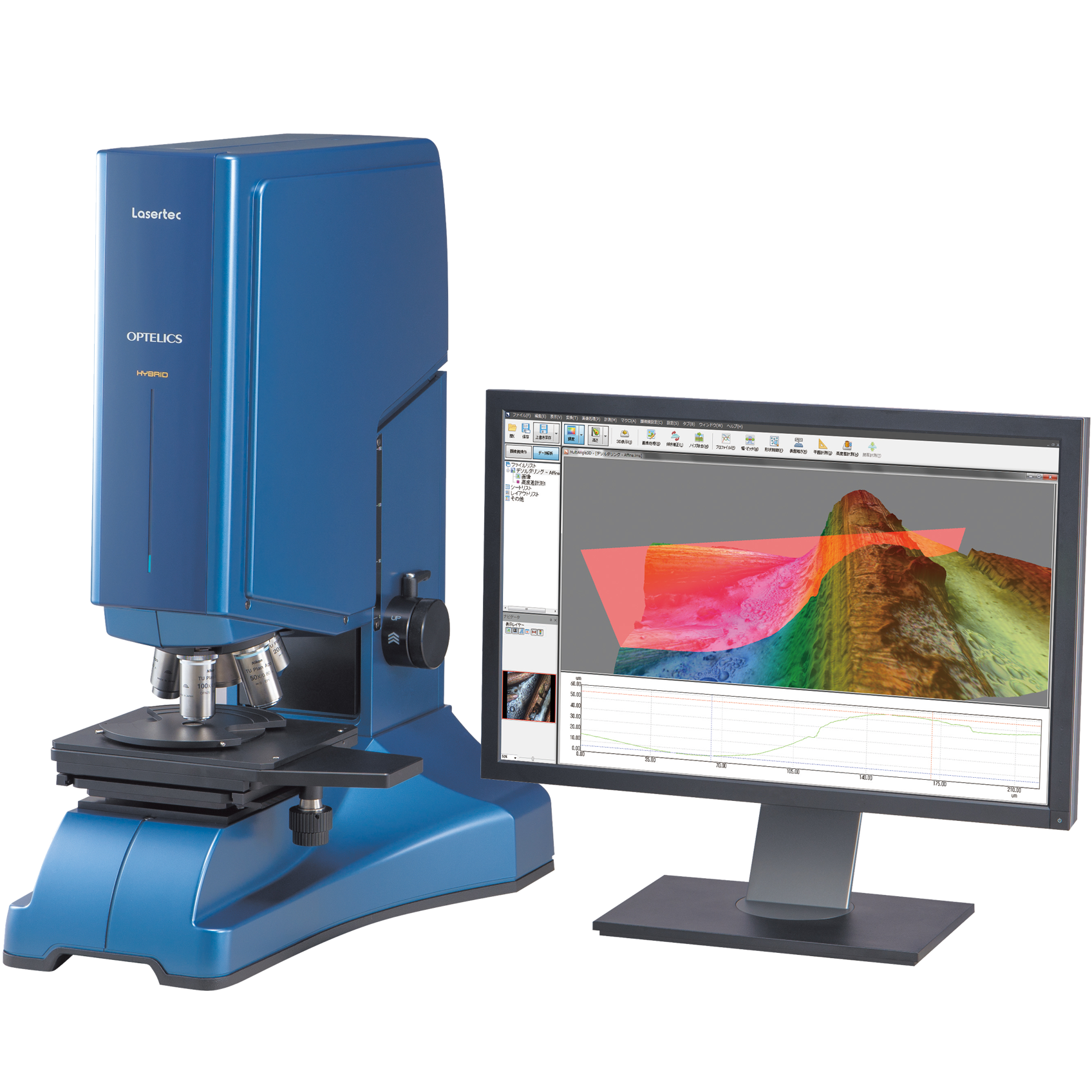Lasertec Optelics Hybrid Laser Microscope
Request a Quote or DemoPowerful and Versatile
A hybrid confocal scanning laser microscope that combines 405nm laser and full-color confocal optics in one body for high versatility and functionality.
OPTELICS® HYBRID is a new type of confocal scanning laser microscope, which combines optical technologies of 405nm scanning laser and full-color confocal in a single microscope. The new hybrid microscope is designed to achieve high resolution and multi-functionality at the same time.
The background behind development of this new microscope is a global trend toward enhanced performance of consumer and industrial products for better energy efficiency and environmental protection. Efforts are being made to explore various new materials that can reduce energy consumption in industry areas such as semiconductor devices, metals, resins, and high-tech materials. There are increasing demands for microscopic observation of surface structures and other characteristics of materials during development and production processes in diverse applications with a high level of measurement speed and accuracy.
Scanning laser microscopes have been widely used in a variety of applications because they can observe and measure surface topography of various samples at the micron scale with ease of operation. Today, however, the needs of nanometer-scale measurement have increased dramatically and, at the same time, higher versatility and functionality are becoming more important because of widening applications. From the perspective of operation efficiency, it is desirable to use a single microscopic device that meets both requirements, but existing microscopes had a limited capability in that sense.
OPTELICS® HYBRID is designed to meet such needs by integrating optical technologies of scanning laser microscope and full-color confocal microscope into a single body for the first time in the world. It is a highly versatile microscope with high magnification and resolution capability and wide field of view while it can perform topography and film thickness measurements using optical interferometry and spectroscopic reflectometer.
